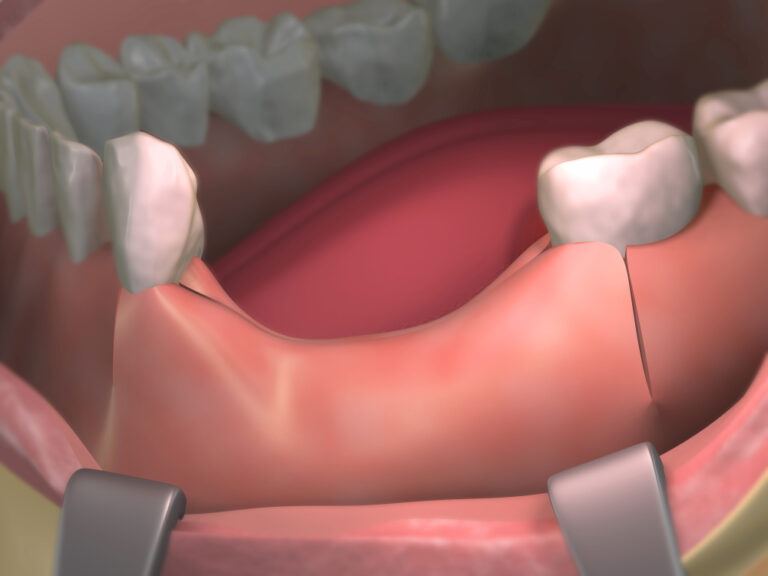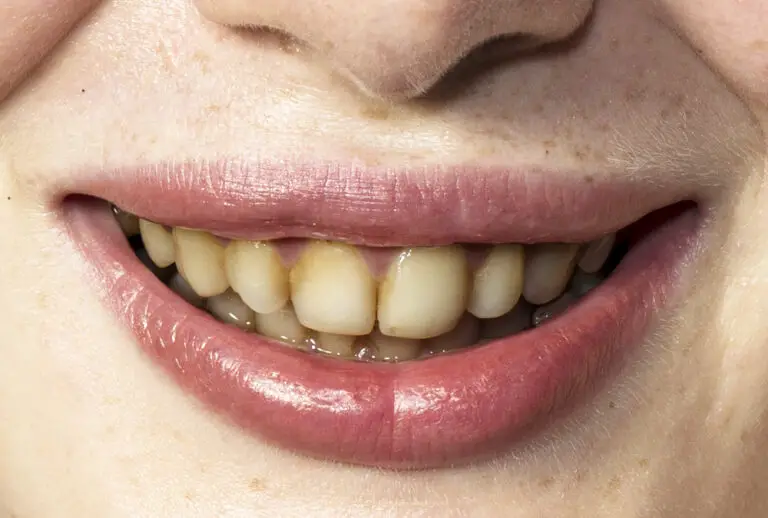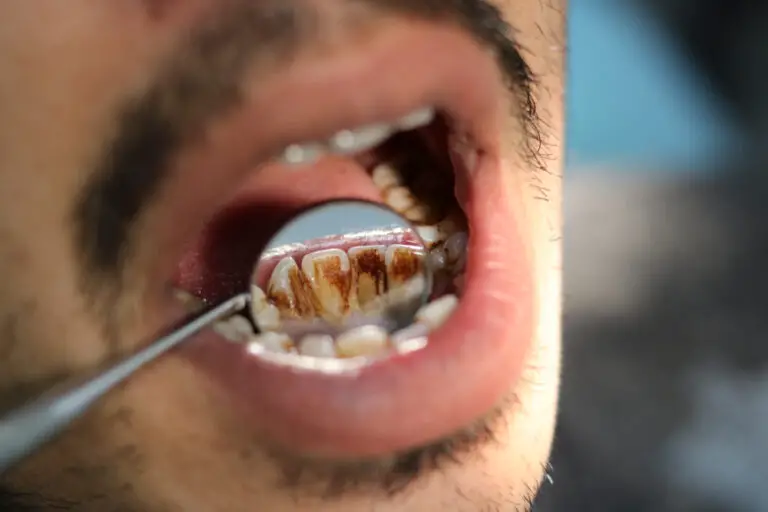Your teeth allow you to chew food, speak clearly and flash a bright, beautiful smile. Strong, healthy teeth are an important part of your overall health and quality of life. However, certain foods, drinks, behaviors and environmental factors can be quite damaging to your teeth. Being mindful of things that may cause tooth decay, discoloration, erosion, chipping, cracking or other types of damage is the first step toward protecting your oral health.
Sugary Foods Lead to Decay and Cavities

Consuming foods and drinks high in added sugars is one of the leading causes of tooth decay. When you eat sugary foods, the bacteria naturally present in your mouth thrive on the sugar and produce acids as a byproduct. These acids eat away at the enamel on your teeth in a process called demineralization. Eventually this acid erosion causes cavities – holes in teeth. The more often you eat or drink sugar and the longer it remains in your mouth before being washed away by saliva or brushing, the more severe the demineralization becomes. Certain sugary foods are worse than others when it comes to tooth decay.
Candy High in Sugar Sticks to Teeth
Hard candies, lollipops, caramels, jelly beans, gummy bears and other sweets are absolutely horrible for your teeth. The high sugar content feeds acid-producing oral bacteria. What makes candy even more problematic is that it stays in direct prolonged contact with your teeth surfaces, allowing the sugar and acid to literally bathe and erode the enamel. Sticky candies like taffy, gummy bears, caramel or sour candies adhere tightly to teeth, embedding sugar into grooves. This allows cavity-causing bacteria ample opportunity to feast on the trapped sugars. Even after you finish eating the candy, some of it remains stuck to your teeth, continuing to promote acid production and demineralization.
Sugar-Laden Cereals Erode Enamel
Lots of popular breakfast cereals, especially those marketed directly to children, contain tons of added sugar. The crunchy texture of cereals also contributes to enamel erosion. When the hard cereal pieces contact your teeth surfaces, they act as tiny abrasives that scratch and wear down enamel. The combination of erosion from the sugar and physical abrasion from crunching is the perfect recipe for significant tooth damage. Kids’ cereals like Froot Loops, Cap’n Crunch, Cocoa Puffs and Lucky Charms are some of the worst offenders with as much as 12 grams of sugar per serving. Over time, habitual consumption of these high-sugar cereals almost guarantees cavity development.
Baked Goods Contain Sugar and Starch
Cookies, cakes, pies, muffins, doughnuts, pastries and other baked goods are a triple threat to your teeth because of their high sugar content, starchy ingredients and stickiness. The added sugars feed oral bacteria while the starch provides extra food for the bacteria as it easily adheres to tooth surfaces. The sticky texture also causes baked goods to cling to teeth, embedding sugar, starch and acids into crevices. Plus, many baked goods are dry and crunchy, causing physical abrasion as you chew them. Just one or two cookies may not be too detrimental. But regularly indulging in baked sweets significantly boosts your risk of cavities, enamel demineralization and tooth decay.
Soda, Sweet Tea and Juice Bathe Teeth in Acid
Sodas, fruit juices, sweetened coffee drinks, energy drinks, sweet tea and other beverages contain shocking amounts of added sugars. Sipping continuously on these sugar-loaded beverages literally bathes your teeth in a concentrated acid solution for extended periods of time. The longer sugars remain in your mouth without being cleared away by brushing, rinsing or saliva, the more damage that occurs. Sipping acidic drinks slowly through a straw directed towards the back of the mouth can help reduce contact with and damage to teeth. But the best option is to avoid sugary beverages altogether and instead drink plain water, unsweetened tea or herbal teas. If you do indulge, swish some water around your mouth after drinking to neutralize acid and rinse away residual sugars.
Dried Fruit Sticks to Teeth Like Glue
Raisins, dried apricots, dried cranberries, dried pineapple, dried mango and other dried fruits have an ultra-sticky chewy texture that clings to teeth for extended periods. On top of that, the natural sugars in dried fruit become super concentrated as the water content is reduced, making them even more hazardous to dental health. Multiple studies have found that raisins are actually worse for teeth than many popular candies due to their stickiness. If you must eat dried fruit, be sure to brush and floss soon afterwards. Better yet, eat fresh fruits like apples, berries and melons which have fiber, vitamins and less concentrated sugars.
Ice Cream May Contain Sugar and Hidden Dangers
While not quite as bad as candy and soda, ice cream isn’t exactly tooth-friendly either. Most commercial ice cream contains added sugars, which contribute to cavities and enamel demineralization. The sugar content in a 1⁄2 cup serving ranges from around 12-30 grams depending on the specific brand and flavor. Ice cream also tends to coat the teeth, allowing the sugar to linger. Waiting to brush after eating helps give your enamel time to remineralize after the acid exposure from the sugar. The cold temperature of ice cream may exacerbate damage as well. Extreme cold makes your enamel more prone to cracks and fractures. Biting into ice cream places concentrated force on teeth, which can also lead to painful chips and cracks in teeth – especially for those with dental restorations like fillings, crowns or veneers.
Simple Starches Lead to Destructive Plaque Buildup

Starchy foods like bread, crackers, pasta, rice, potatoes and breakfast cereals don’t contain large amounts of added sugars. But they can still wreak havoc on your dental health because of how the starches interact with oral bacteria. When you chew starchy foods, some of the starch component remains stuck on your tooth surfaces after swallowing. This starch then provides the perfect breeding ground for bacteria to multiply and form plaque – a sticky film containing bacteria, food debris and their toxic byproducts. The bacteria in plaque produce acids as they digest and ferment the trapped starches, creating an acidic environment that demineralizes and decays enamel. Within just 20 minutes after eating simple starches and before brushing, the pH in your mouth becomes highly acidic and enamel erosion begins. In addition to acid production, plaque also directly releases toxins that damage tooth surfaces and irritate gums. Some of the starchy foods that are particularly problematic include:
Bread Sticks to Teeth
Bread is a double whammy because not only does it contain starch, but it also tends to stick to teeth more than some other starchy foods. Bits of bread get embedded in grooves and adhere to dental work. The longer bread remains stuck in your mouth, the more acidic your oral environment becomes. This includes white breads, whole grain breads and muffins.
Crackers Leave Starchy Residue
The crunchy texture of crackers means crumbs and granules cling to teeth easily. Saltine crackers, Ritz, Wheat Thins and other snack crackers coat your mouth with starch that feeds plaque acid production.
Pasta Sticks Between Teeth
Noodles, spaghetti and other pasta often wedge between teeth, allowing for prolonged starch exposure and plaque buildup in those areas. Rinsing your mouth after eating pasta helps dislodge some of the debris.
Potatoes Soften and Stick When Chewed
When you chew potatoes and other root vegetables, they quickly soften and turn somewhat sticky in your mouth, allowing the starch to spread over teeth before swallowing. Fries, mashed potatoes and baked potatoes are starchy culprits.
Cereals Create Starch Film
Dry breakfast cereals don’t have lots of added sugar like kids’ cereals, but they still contain high starch levels. As you chew, a thin film of starch remains on and between teeth.
Over time, habitual consumption of starchy foods like bread, pasta, cereal, crackers and potatoes promotes plaque buildup and enamel erosion. Be sure to brush within 30 minutes after eating these foods to limit damage and prevent cavities.
Acidic Foods Soften and Erode Enamel
Many common foods and beverages have an inherently acidic pH. Exposing your teeth frequently or repeatedly to acidic foods can cause significant enamel erosion and demineralization as acid literally dissolves the mineral content of your tooth surfaces. It doesn’t matter if the acids come from added ingredients like citric acid or are naturally present in the food. Prolonged contact between acidic foods and your teeth gives the acids time to work away at the enamel. Foods with especially high acidity include:
Citrus Fruits and Juices
Oranges, grapefruits, lemons, limes and other citrus fruits contain high concentrations of citric acid, ascorbic acid and malic acid that weaken enamel. Citrus juices may be even worse than eating the whole fruits because the juices remain in constant contact with teeth while the fleshy pulp of whole citrus fruits tends to clear away from teeth more quickly when chewing. Swishing with plain water after consuming citrus can help neutralize the acid.
Vinegars Strip Away Enamel
Vinegars all contain acetic acid that erodes teeth. Red wine vinegar, balsamic, rice vinegar and other types are all quite acidic. Vinaigrettes, pickled foods, hot sauces and other items containing vinegar can damage your enamel if they linger on teeth before rinsing.
Carbonated Beverages Are Highly Acidic
The bubbles in soda, seltzer, and other carbonated drinks come from pressurized carbon dioxide, which forms carbonic acid in water. The acidity level of carbonated beverages usually falls around pH 3-4, which is close to battery acid! Drinking plain sparkling water avoids added sugars, but the carbonic acid still poses a threat to teeth.
Wine Contains Malic and Citric Acids
Red and white wines contain acids like malic, citric, tartaric and tannins. Wine’s acidic pH combined with the ingestion of sugary alcoholic beverages is a double blow to tooth health. Swishing water between sips of wine can help counteract the acids.
Pickles Soak Teeth in Vinegar
Pickled foods like cucumbers, sauerkraut, kimchi, jalapenos, olives and pickles literally soak your teeth in acidic brine as you eat them. Rinse with plain water after eating.
With adequate brushing, rinsing, water intake and limited frequency of consumption, your saliva can help neutralize and wash away the acids from eating acidic foods. But frequent snacking on high acid foods and beverages throughout the day keeps your mouth in a constant state of an acidic pH, which decimates enamel over time.
Hard Foods Can Crack, Chip and Abrade Teeth

Extremely hard foods can also wreak havoc on your dental health. Foods that are hard and crunchy can chip teeth, dent fillings, and damage dental work like crowns, veneers and braces brackets. Some hard foods are also quite sticky, causing additional damage as they pull on dental restorations. Avoid crunching directly on hard foods with front teeth.
Hard Candy Can Crack Teeth
Jaw breakers, lollipops, hard mints, candy canes and other rock-hard candies can potentially crack tooth enamel and expose sensitive dentin underneath when you bite down. Sucking on hard candies reduces the risks.
Ice Cubes Are As Hard As Your Teeth
Chewing ice runs the risk of fracturing teeth and damaging fillings and other dental work. The coldness makes your enamel more brittle as well. Simply allowing ice to melt in your mouth is safer than chewing it.
Nutshells Wedge Into Teeth
Crunching directly down on nutshells like almonds, walnuts or pecans can transfer intense force onto a small area of a tooth. This uneven pressure can fracture parts of teeth, detach dental work or cause lesions in the enamel that then require fillings.
Popcorn Kernels Get Stuck
Un popped popcorn kernels easily get wedged into crevices and tight spaces between teeth. Biting down runs the risk of cracking the kernel and damaging nearby teeth and dental restorations.
Chewing Ice Gels and Cups
Some people love to chew on their ice cream cones, popsicle sticks or ice gel cups. The combination of cold temperature, hardness and stickiness is sure to cause cracked and broken teeth over time.
To protect your teeth from damage, cut foods like apples into smaller pieces and chew them with your back molars instead of biting directly down. Avoid chewing hard non-food items like pens, nails or bottle caps which can fracture teeth. Most importantly, take care when eating crunchy hard foods and never bite into them with your front teeth.
Sticky Foods Pull Out Fillings and Dental Work
Foods with an extremely sticky, gummy or tacky texture can latch onto teeth and dental work, eventually pulling out restorations like fillings, caps and crowns if they stick hard enough. Some of the worst sticky culprits include:
Caramel and Taffy Pull Out Fillings
Extremely sticky, gooey candies like caramel, taffy and fruit chews grip tightly to fillings, crowns, and bridges. As you work the candy in your mouth, it can slowly loosen and eventually extract dental work it adheres to.
Dried Fruit Fuses to Teeth
Raisins, apricots, dates and other dried fruits act like glue as they stick to teeth surfaces and dental restorations. Their sticky texture allows them to latch on tightly.
Bubble Gum Gets Embedded
Chewing gum is especially problematic for people with braces, but it poses risks for anyone with fillings, crowns and dental bonding. The sticky gum can work its way underneath bonded restorations and loosen them over time with repeated chewing.
Tootsie Rolls Stick Between Teeth
Tootsie rolls, caramels and other dense, chewy candies tend to wedge tightly between teeth. As they slowly dissolve, they adhere firmly to tooth surfaces and can dislodge fillings.
Avoid sticky foods as much as possible or be very careful when chewing them to reduce risks of pulling out dental work. Promptly remove any food stuck in teeth with floss to prevent tugging damage. Also avoid chewing gum altogether if you have extensive fillings or dental appliances.
Certain Cooking Oils Promote Inflammation

Cooking oils are generally considered the “healthy fats” compared to saturated fats like butter or lard. But certain cooking oils may damage your oral health. Oils rich in omega-6 polyunsaturated fatty acids like vegetable, soybean, corn and canola oil promote inflammation when consumed in high amounts. This inflammation appears to contribute to inflammatory gum diseases like gingivitis and periodontitis. The omega-6s found in these cooking oils are easily oxidized during cooking at high heat into harmful free radicals that trigger chronic inflammation in the body when ingested – including oral inflammation. Oils with primarily monounsaturated fats like olive oil, avocado oil and peanut oil are less inflammatory, as are omega-3 rich oils like flaxseed oil. Limit omega-6 cooking oils and opt for olive oil or coconut oil whenever possible to avoid exacerbating gum disease.
Alcohol Causes Dry Mouth and Thrush
Drinking excessive amounts of alcohol allows bacteria to grow unchecked in your mouth because alcohol reduces saliva flow. Saliva helps wash away food debris and neutralize damaging acids. Alcohol’s dehydrating effect turns your mouth into a dry, bacteria-friendly environment. Without adequate saliva flow, your risk of tooth decay and periodontal disease increases dramatically. Candida fungus also thrives in the newly created moist, acidic environment, which can lead to oral thrush – a white cottage cheese-like infection that damages gums and tongue. The high sugar content of many mixed drinks also adds to the potential for tooth decay. If you choose to drink alcohol, do so only in moderation. Avoid frequent consumption of sugary cocktails and drink plenty of water in between alcoholic beverages to encourage saliva production.
Caffeine Contributes to Dry Mouth and Staining
Like alcohol, caffeine causes decreased saliva flow in your mouth. Coffee, tea, soda, energy drinks and other caffeinated beverages all trigger dry mouth, providing opportunity for bacteria growth and tooth decay. Without saliva to rinse your mouth, acids and sugars left behind after eating or drinking sit and stew on your teeth, eroding enamel. On top of that, drinks like coffee and black tea as well as cigarettes stain teeth yellow or brownish over time as tannins, tar and other compounds build up on your enamel. The drier your mouth, the more severe staining tends to be. Rinsing with water after consuming caffeinated beverages can help prevent drying and staining. Chewing sugar-free gum or mints after your morning coffee can help produce more saliva as well.
Smoking Causes Yellow Teeth and Gum Disease
Smoking cigarettes, cigars, pipes and chewing tobacco are extremely detrimental to oral health for multiple reasons:
- Tar and nicotine in tobacco stain teeth brownish-yellow. The hot smoke also chemically alters your enamel to yellow it.
- Toxins in tobacco smoke or chew irritate gums and change oral bacteria balance, enabling gum infections.
- Smokers produce less saliva, allowing bacteria to multiply.
- Tobacco use increases your risk of oral thrush and Candida growth.
- Chemicals in tobacco smoke destroy tissues, leading to receding gums, gum disease and tooth loss.
- Tobacco drastically escalates your risk of oral cancer of the lips, gums, tongue and throat.
Ideally, do not smoke or chew tobacco for the sake of your oral and overall health. But if you currently use tobacco, consider quitting or speak with your doctor about aid in quitting. Proper brushing and flossing, use of fluoride and regular dental cleanings helps minimize some of smoking’s damage but doesn’t eliminate the risks entirely.







